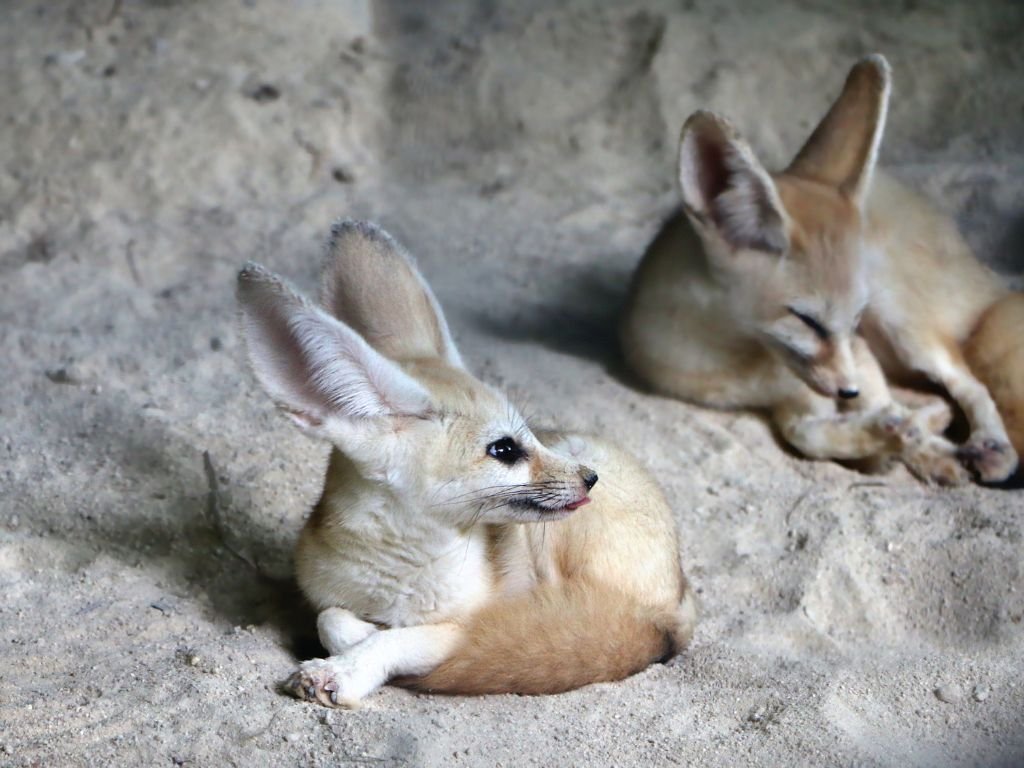Fennec foxes are small desert-dwelling foxes native to the Sahara Desert in North Africa. They are adapted to living in hot and dry environments, and have a number of physical and behavioral adaptations that help them survive in these conditions. These adaptations of a Fennec Fox enables them not only survive but even thrive under difficult conditions making them one of nature’s most resilient species!
Adaptations of a Fennec Fox
Known for its large ears, which can reach up to 6 inches long, the fennec fox uses them as cooling devices and also helps locate prey at night. Its fur is thick and insulates against extreme temperatures during both day and night. The coloration of their coat also serves as camouflage when hunting small mammals like rodents or insects that inhabit this desert region.

In addition to physical adaptations for survival, the fennec fox has behavioral traits that allow it to thrive despite scarce resources within its habitat. It’s an omnivore with an opportunistic diet; they eat whatever food sources are available including plants like roots or cacti along with animals such as birds or lizards if necessary. They have been observed digging burrows into sand dunes where they can rest during hot days while avoiding predators by using their keen hearing senses due to those big ears!
Behavioral Adaptations of a Fennec Fox
Nocturnal behavior:
Fennec foxes are nocturnal animals, which means they are active at night and sleep during the day. This helps them avoid the heat of the desert during the day and reduces the risk of overheating.
Burrowing behavior:
Fennec foxes are skilled diggers and use their paws and sharp claws to burrow into the ground to create dens and escape the heat.

Social behavior:
Fennec foxes are social animals and live in family groups called “leashes.” These groups consist of a breeding pair and their offspring.
Vocalizations:
Fennec foxes use a variety of vocalizations to communicate with each other, including whistles, chirps, and barks.
Play behavior:
Fennec foxes are playful animals and engage in a variety of playful behaviors, such as chasing, wrestling, and pouncing.
Territorial behavior:
Fennec foxes are territorial animals and mark their territory with urine and scent glands on their feet.
Mating behavior:

Fennec foxes have a monogamous mating system, and pairs form long-lasting bonds. During the breeding season, males will defend their territory and females from other males.
Structural Adaptations of a Fennec Fox
They have several structural adaptations that allow them to survive in their arid, desert habitat.
Large Ears
One of the most notable adaptations of the fennec fox is its large ears. These ears help the fox dissipate heat and regulate its body temperature in the hot desert environment. The ears also have a keen sense of hearing, which helps the fennec fox locate prey underground.

Fur
Fennec foxes also have thick, dense fur that insulates their bodies and protects them from the hot desert sun. The fur is typically a sandy color, which helps the fox blend in with its surroundings.
Physiological Adaptations of a Fennec Fox
Fennec foxes have several physiological adaptations that allow them to survive in their arid, desert habitat. These physiological adaptations of the fennec fox allow it to survive and thrive in its desert habitat by helping it conserve water, extract maximum nutrients from its food, and withstand extreme temperatures.

Highly efficient renal system
One of the most important physiological adaptations of the fennec fox is its highly efficient renal system. This system allows the fox to conserve water and survive on very little water intake. Fennec foxes are able to extract as much water as possible from the prey they eat, and they also get some moisture from the plants they consume.
Low resting metabolic rate
Fennec foxes also have a low resting metabolic rate, which helps them conserve energy in their desert habitat. In addition, they have a high tolerance for heat and can withstand temperatures that would be lethal to other mammals.

Digestive system
Another important physiological adaptation of the fennec fox is its digestive system. Fennec foxes have a short, simple digestive system that is well-suited to their diet of small prey, insects, and plants.







Leave a Reply